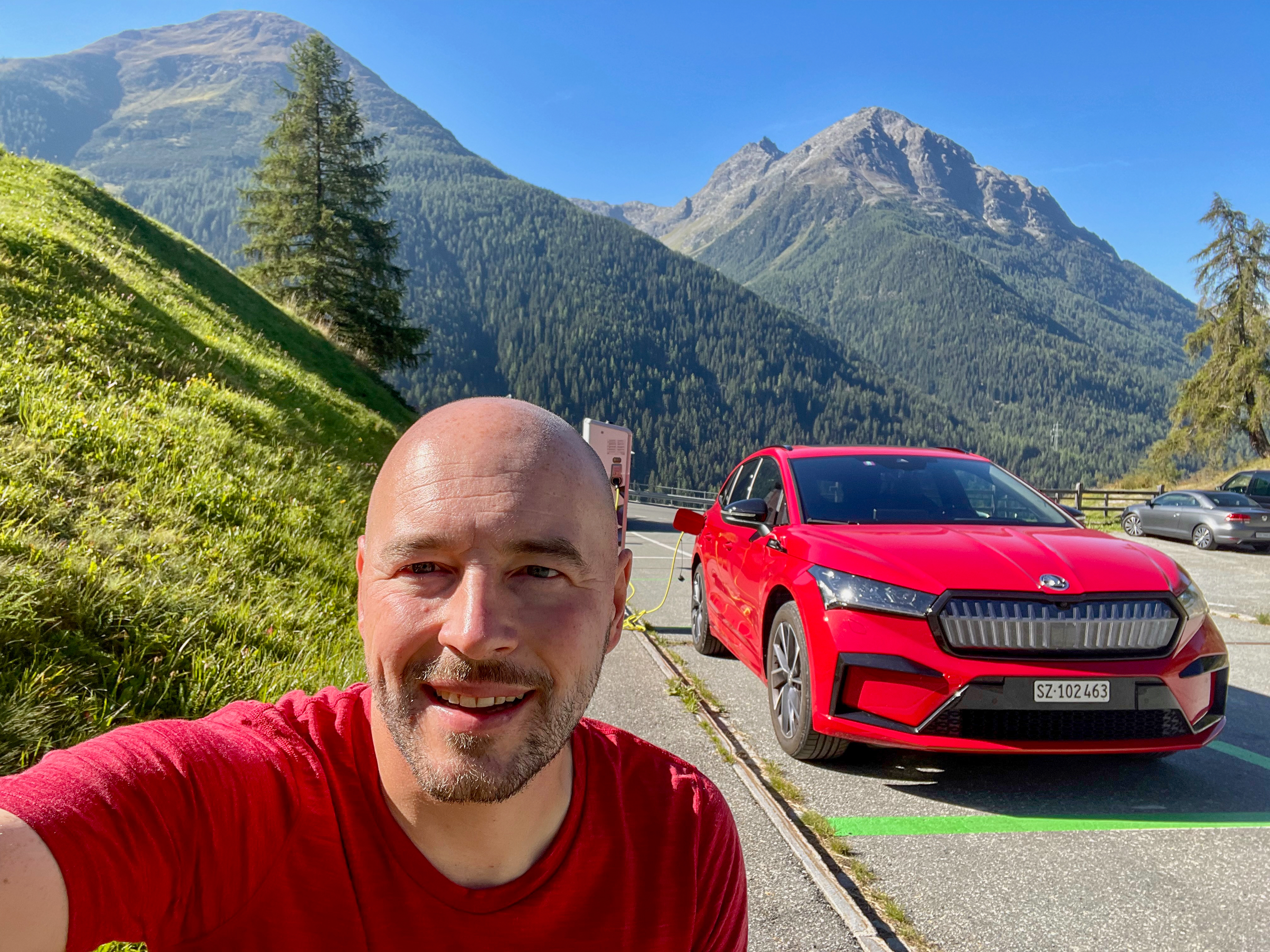Charging is a routine
The Enyaq iV is the couple’s main and everyday car. They use it to commute, run errands and drive through Switzerland going on hiking and mountain trips. The car did some 27,000 kilometres during the first year. Matthias even shares a tip for the software developers at Škoda: “I did many overnight trips when I slept in the Enyaq iV. It has enough space when the backseats are folded and it makes for a comfortable bed. The only thing I miss is a camp mode that would keep the car running (heating, music, lights). Today, the car shuts down after 30 minutes.”
 Folding down the rear seats turns the Enyaq iV into a comfortable bed.
Folding down the rear seats turns the Enyaq iV into a comfortable bed.
Having installed wall-boxes in the garage of the house for all flat owners, Matthias avails of charging the car all the time it’s parked. Since he drives a lot on motorways, his Enyaq’s range isn’t as high as others might be achieving. “In summer it’s typically 430–460 kilometres with a 100-per-cent charge. But in the harsh alpine winters it really drops to about 320 kilometres even though the car has the heating pump. With a typical charge to 80 per cent, I rarely see a 3 as the first digit on the range gauge,” he smiles and adds that he typically needs two “complete” charges from 10 to 80 per cent to get through a week (charging around 100–120 kWh per week). “I split these complete charges into smaller portions – I always plug my car in every day because I can charge at home. It has become a routine to plug it in right after parking.”
 The Enyaq iV copes well with charging on journeys.
The Enyaq iV copes well with charging on journeys.
Unveiling one of his “how to” tips, Matthias says that 90 per cent of his Enyaq’s charging is done with the slow AC charger at home. The remaining time is fast charging on longer trips. “Charging at home is the best thing that can happen to you. You always have a charged car and don’t need to go to the petrol station anymore. That’s really convenient. When charging on the go, the Enyaq iV performs well – if you know how to do it. You need to plug it in with a really low SoC, best below 10 per cent. This way, you get the power high and charging time low. As with all EVs, you shouldn’t charge to more than 80 per cent because this last bit from 80 to 100 takes too long. Better go on and make one more charging stop. It’ll be faster in the end. My Enyaq doesn’t have the new software yet so I don’t have Plug&Charge which would be a great addition – I look forward to the update.”































